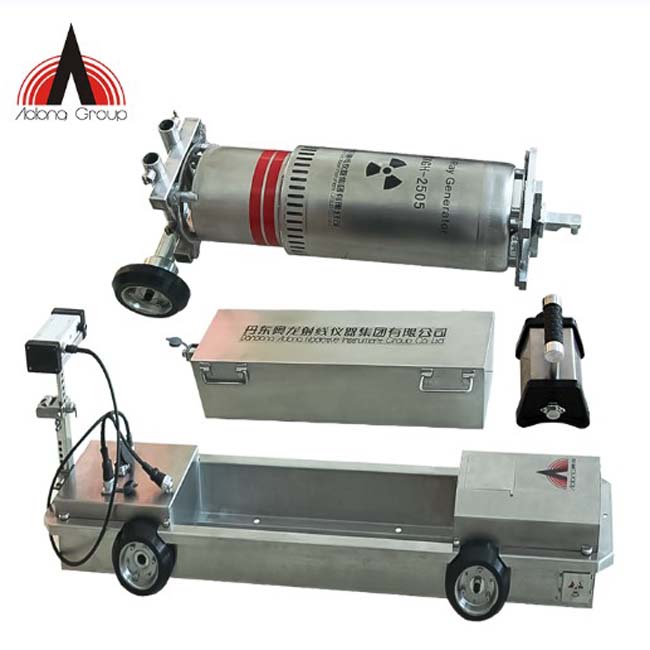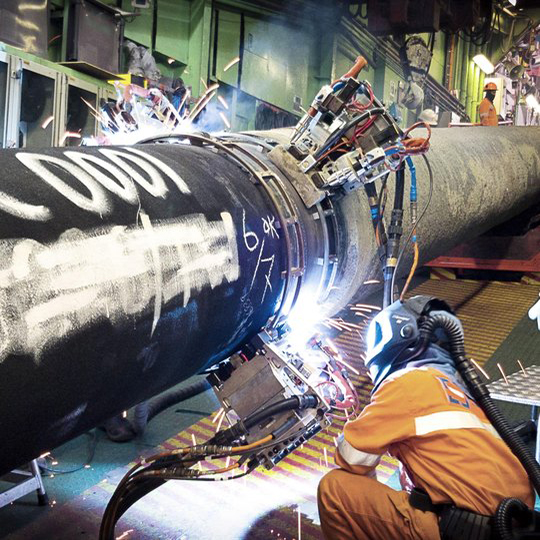Comprehending the Fundamentals of Pipe Welding Evaluation: Critical Variables for Assessing Weld Top Quality and Fighting Failings
In the world of pipeline welding examination, the stakes are indisputably high, requiring a comprehensive understanding of basic principles to make certain weld quality and alleviate failure dangers. Numerous vital aspects enter play, including the option of suitable products, the application of innovative evaluation strategies, and the acknowledgment of prevalent welding flaws. Furthermore, adherence to regulative criteria plays a pivotal function in keeping system integrity. Yet, the complexities integral in these procedures raise essential concerns concerning ideal practices and emerging innovations that might redefine examination methods-- questions that require additional exploration.
Importance of Weld Quality
The honesty of a pipe is basically dependent on the high quality of its welds, making weld high quality an important aspect in making sure risk-free and efficient operation. A pipe weld acts as a junction factor where products are joined, and any kind of shortages in this field can lead to substantial structural weak points. Poor bonded high quality can cause leaks, tears, and tragic failures, posturing severe safety threats and environmental risks.
A number of factors add to the high quality of a weld, consisting of the option of welding procedure, the skills of the welder, and the problems under which the welding is carried out - Pipeline Welding Inspection. Poor preparation, inappropriate heat input, and contamination can endanger weld integrity, causing issues such as porosity, incomplete blend, or fractures. Consequently, strict quality assurance steps have to be implemented throughout the welding procedure to minimize these risks
Furthermore, the lasting performance of a pipeline is greatly affected by the sturdiness of its welds. High-quality welds not only improve the total strength of the pipeline however likewise expand its life span, decreasing the requirement for pricey repairs and downtime. Thus, making certain superior weld quality is critical in pipe layout and upkeep practices.
Key Evaluation Methods
Making sure weld high quality demands the execution of reliable examination strategies to recognize possible imperfections prior to they lead to failures. Pipeline Welding Inspection. Amongst one of the most extensively made use of approaches are aesthetic assessment, radiographic testing (RT), ultrasonic testing (UT), and magnetic bit testing (MT) Each technique offers a distinctive objective and is chosen based upon the specific requirements of the pipe task
Aesthetic evaluation is the initial line of defense, enabling inspectors to examine surface area conditions, positioning, and total workmanship. Radiographic screening gives a comprehensive sight of inner weld integrity by utilizing X-rays or gamma rays to detect subsurface defects.
Ultrasonic screening uses high-frequency acoustic waves to examine the density and honesty of welds, making it optimal for identifying internal interruptions. Magnetic fragment testing is a trustworthy approach for identifying surface and near-surface problems on ferromagnetic materials by using magnetic areas and great ferrous particles. By utilizing these essential assessment methods, pipe welding assessors can ensure the highest high quality requirements are preserved, eventually causing much safer and extra trusted pipe systems.
Usual Welding Issues
Among the most prevalent defects are porosity, which takes place when gas entraps in the weld metal, creating gaps that compromise the joint. One more substantial concern is lack of combination, where the weld steel does not appropriately bond with the base material, compromising the joint's stamina.

Cracks are additionally a vital concern, materializing in various types such as warm fractures, cool cracks, and origin splits. Each type presents unique difficulties and requires particular examination techniques for discovery. Undercut is an additional problem that can minimize the weld's cross-sectional area, causing anxiety focus factors, while slag inclusion happens when non-metallic product becomes trapped in the weld pool, detrimentally influencing the mechanical properties of the weld.
Additionally, wrong grain form can lead to unequal anxiety circulation. Identifying these common defects is vital for inspectors and welders alike, as early detection and adjustment are crucial to making sure the long Recommended Site life and integrity of pipe systems.

Products and Their Influence
Picking the appropriate materials for pipeline welding substantially affects the total efficiency and integrity of the welded joints. The choice of base metals, filler materials, and finishings plays a vital duty in establishing the toughness, corrosion resistance, and resilience of the welds. As an example, carbon steel is typically utilized for its balance of strength and cost, however it might be prone to rust in certain environments, necessitating making use of safety layers or corrosion-resistant alloys.
Moreover, different steel welding needs cautious consideration of thermal expansion properties and potential galvanic deterioration. The compatibility of products can significantly impact the microstructure of the weld, leading to variants in mechanical residential properties. For example, stainless steel supplies exceptional corrosion resistance yet may require details filler materials to ensure an audio weld joint.
Additionally, the influence of temperature and ecological conditions on product selection can not be taken too lightly. High-strength steels may lose ductility at raised temperatures, while low-temperature applications may require materials with boosted durability. Ultimately, comprehending the implications of material selections is vital for attaining ideal weld top quality and avoiding failings in pipe systems.

Regulatory Specifications and Compliance
Governing standards and compliance play a critical function in pipe welding, developing the structure within which effective and safe practices are maintained. These standards are established by different organizations, including the American Society of Mechanical Engineers (ASME), the American Welding Society (AWS), and the Pipeline and Hazardous Materials Safety Administration (PHMSA) Abiding by these policies guarantees that welding procedures meet the required quality and safety benchmarks.
Compliance with regulatory standards is important not only for ensuring the integrity of the welds yet also for securing the atmosphere and public security. Inspectors are tasked with validating that welding procedures follow these standards via extensive evaluations of both the processes and the last welds. This includes evaluating welder qualifications, welding treatments, and the materials used.
Failing to abide by recognized regulations can bring about considerable consequences, consisting of costly fixings, legal liabilities, and disastrous failures. Consequently, organizations must incorporate compliance right into their operational methods, fostering a society of safety and high quality. Regular training and audits are essential elements in keeping adherence to these regulative criteria, making sure that all personnel are knowledgeable and outfitted to support the highest degree of pipe welding quality.
Final Thought
To conclude, an extensive understanding of pipe welding inspection is important for making sure weld top quality and avoiding failures. By utilizing vital inspection methods and acknowledging usual welding defects, inspectors can efficiently examine the honesty of welds. Factor to consider of product selection and adherence to regulatory requirements additionally improve the dependability and safety i loved this and security of pipe systems. Inevitably, click here for more these techniques add to the avoidance of leakages and tragic failings, emphasizing the critical importance of rigorous evaluation processes in pipeline construction and upkeep.
In the realm of pipeline welding examination, the risks are indisputably high, demanding a detailed understanding of essential concepts to guarantee weld high quality and mitigate failing dangers (Pipeline Welding Inspection).The integrity of a pipe is fundamentally dependent on the high quality of its welds, making weld quality an essential aspect in guaranteeing secure and effective procedure.A number of factors add to the quality of a weld, consisting of the option of welding process, the skills of the welder, and the conditions under which the welding is carried out. Undercut is another problem that can lower the weld's cross-sectional location, leading to stress concentration points, while slag addition takes place when non-metallic product ends up being entraped in the weld pool, adversely impacting the mechanical residential or commercial properties of the weld
In verdict, an extensive understanding of pipeline welding evaluation is vital for ensuring weld high quality and stopping failings.